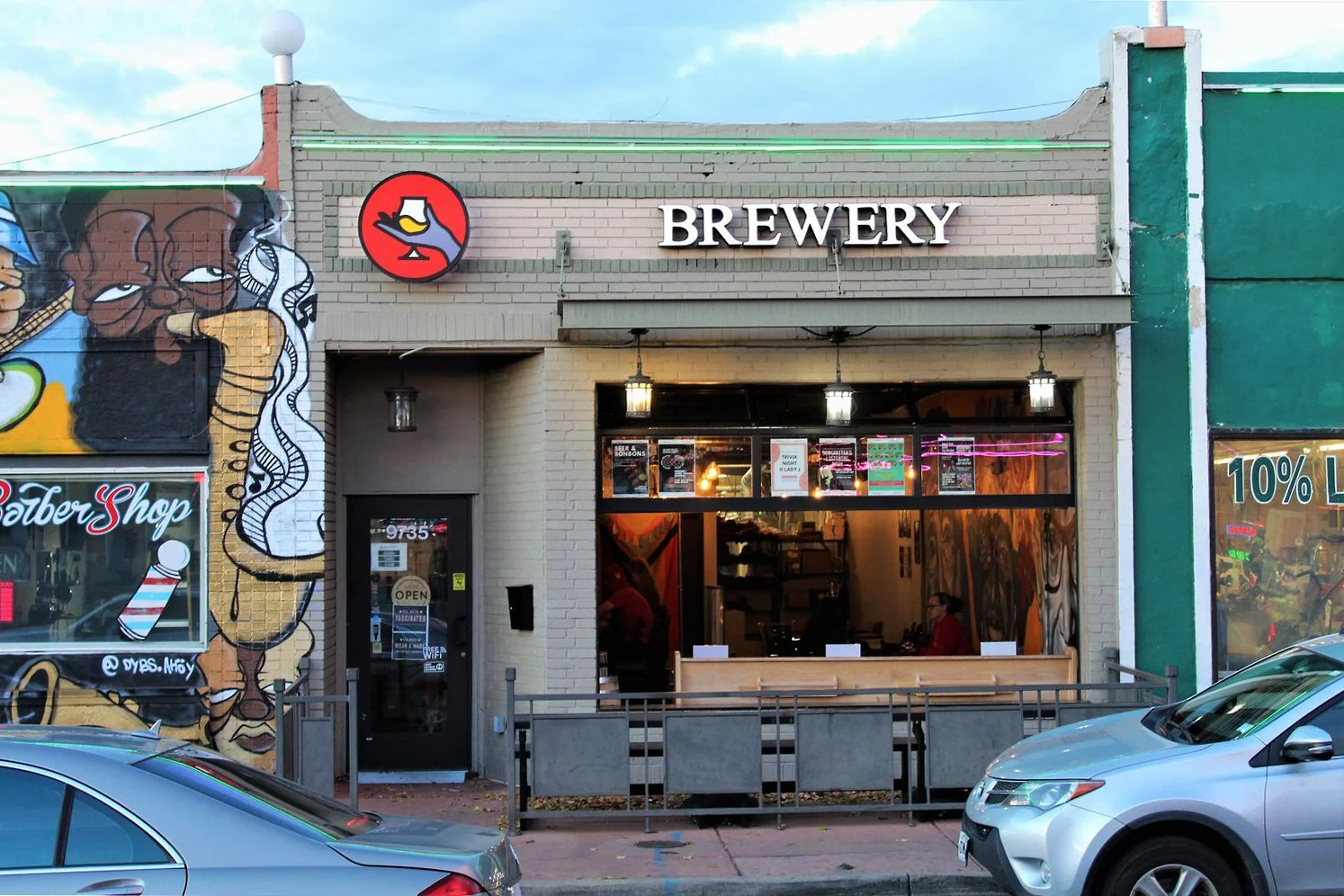Hello Darkness My Old Friend — In Search of American Porter
I had no idea what a porter was when I grabbed a six-pack of Great Lakes Edmund Fitzgerald from the refrigerator of a last-chance gas station in Michigan’s Upper Peninsula, sometime in the mid-2000s. My family has taken camping trips to the coast of Lake Superior since before I was born, and the first time we ventured north after I could legally drink, my sister and I went to the lone convenience store in the small town of Grand Marais and stared at the beer options. We knew nothing, so we did what we all do when encountering a new drinks segment: we looked for pretty pictures on the labels. We saw the ill-fated ore freighter tossed by stormy seas on these bottles from a Cleveland brewery and made our choice.
By the end of the weekend I still didn’t really know what a porter was, but I knew I liked this beer. When you’re first getting into beer—now or twenty years ago—finding the next beer you’ll like means grabbing on to the style of the beer you just enjoyed and looking for other beers that are similar, hoping for a pattern to emerge: Drink a beer and realise you like it. Find an important-looking word on the label. Look for that word on another label and buy that beer. Drink it and see if you like this one too. Rinse, repeat. There are just too many things to learn, unless you’re really going to learn them.
Fortunately for me, in the US, porters were seemingly everywhere in the mid-2000s. Every brewpub seemed to have one, and they weren’t hard to find on store shelves. It was one of the first styles I claimed as a favourite, and that seemed like a good investment in a stable future of beer-drinking at the time. Fast forward to 2023, and enthusiasm for porter has aged about as well as compact discs—both can still technically be found, but peaked in the late 1990s.
““By the end of the weekend I still didn’t really know what a porter was, but I knew I liked this beer.””
“My memory goes back a little further, to the late eighties,” says Oregon-based beer writer Jeff Alworth, whose Beervana blog has chronicled the industry for almost as long as I’ve been legally drinking.
“Here on the West Coast, we had kind of a standard brewpub line-up that I’ve often referred to as the ‘chromatic line’—golden, amber, brown, and then a porter or stout, sometimes both. The porter was a total standard.”
In 2023, only a few legacy porter brands remain. Fitz is still ubiquitous here in Ohio and the Midwest in general. Deschutes Black Butte from Oregon is still around, though it’s getting harder to find here on the opposite side of the country. Bell’s Porter can occasionally be spotted, though who knows for how much longer. Anchor’s and Sierra Nevada’s porters have not been seen in the wild in years and are presumed extinct in these parts. Sales figures from Bart Watson, Chief Economist at the Brewers Association (the trade body representing small, independent breweries in the United States) show porter’s share of total craft has dropped by 60% by sales volume since 2007, the earliest year for which numbers are available.
So what happened? How did this popular style become little more than a nostalgic anachronism? Reader, I don’t know, and neither does Jeff.
“It’s actually one of the great mysteries to me in all of beer, because in their best examples, they had a fairly coffee-like profile, and it’s not like people quit drinking coffee, or don’t like chocolate anymore,” he observes.
“Those are really familiar flavour notes. I’m at a total loss. It’s a mystery.”
Illustrations by James Albon
Some of porter’s decline might stem from the blue collar accessibility that made it popular in the first place. Since its adoption by American craft brewers as a standard style in the 1980s, American porter has generally been brewed to between 5.5-6.0% ABV with a medium body and moderate hopping. In the last decade or even half-decade, we’ve seen a split in style trends, with easy drinkability at one end of the spectrum and strong, intensely-flavoured beers at the other end. A 4.5% German pilsner might have brewers and die-hards salivating, while 14% behemoths dominate the rankings on Untappd. A roasty, 6% beer is something of a no-man’s-land, neither low enough in strength or mild enough in flavour to be “sessionable” nor strong or intense enough to be daring.
In this way, perhaps hewing to porter’s origin might have served the style better. American porter sprang from the English porter tradition, and like many English styles, while there was a range of historical expressions, modern English porter is a lower-strength, lighter-bodied beer intended for rounds at the pub. English porters tend to have less intense roast and hopping than their American counterparts, and usually fall about a full percent lower in ABV. Less exciting in the early days of US craft perhaps, but laid-back enough to slot in with the current low-level rise of Czech tmavé, schwarzbier, and dark mild if the cards had fallen right.
Finally, stylistic ambiguity has not been porter’s friend. Handily the most common question I have been asked while leading beer tasting events for almost a decade now is: “what’s the difference between porter and stout?”
““Optimistically, I want to say things are cyclical and porter will come back.””
If you’re a seasoned beer fan, your own response might range from the technical to the dismissive, seeing the distinctions as either obvious or superfluous. On its surface, the clearest objection to an easy answer might be, “which type of porter and which type of stout?”
The range of these beers represents a continuum of related flavours, and perhaps ironically, this close relationship might work against porter. Stouts, as a group, have more cultural cachet—everyone has had a Guinness—while the average newcomer to beer might not know what a porter is and assume more distinction than similarity.
In the end though, there’s no easy answer. Porter has a long, rich history filled with colourful characters and stories, and I’ve gotten used to telling many of them while leading beer tastings around Dayton, Ohio. Two of our region’s best breweries—Carillon and Mother Stewart’s—brew Porters in their regular rotation, bucking the national trend. Event attendees are interested to hear about the porter flood of 1814 that killed eight people, and the vast scale at which porter was brewed in London during the Industrial Revolution. Perhaps the problem is there are no new stories to tell. American porter was a pub favourite, but never broke out in any individual way, hemmed in by stout styles with no vertical limit on strength. Pockets of popularity exist—the style hasn’t disappeared here in Ohio, and Jeff shares they can still be found in his wife’s home territory of New England—but it is more and more an anachronism, a relic of a different era of craft beer.
So will the style ever recover and find its moment once again?
“Optimistically, I want to say things are cyclical and porter will come back,” Jeff tells me as we reminisce.
“But in real terms, I don’t think so.”
One point of hope might lie with the style’s English progenitor. At one point in the twentieth century, porter was extinct in its homeland. Not a single one was being brewed. The style has since been revived, perhaps offering hope for its American descendent.
While I agree with Jeff that American porter is unlikely to come back in a big way, generational tastes do have a way of balancing themselves in U.S. culture. Perhaps when Gen Z-ers are in their 40s, their kids will push back against prevailing tastes and reclaim the blue collar charm of classic porters. It’s been rediscovered before. Let’s hope there are a few left for them to fall in love with.










